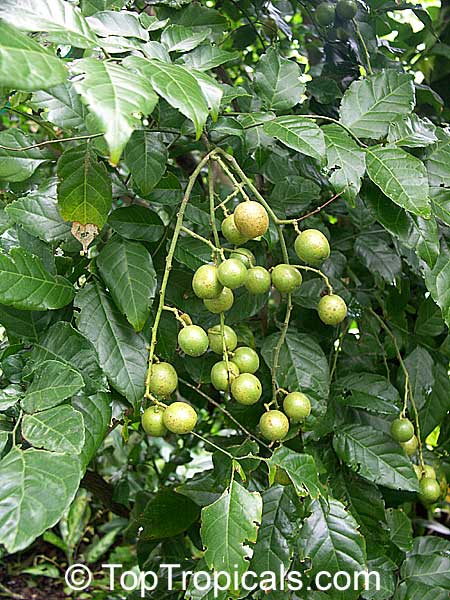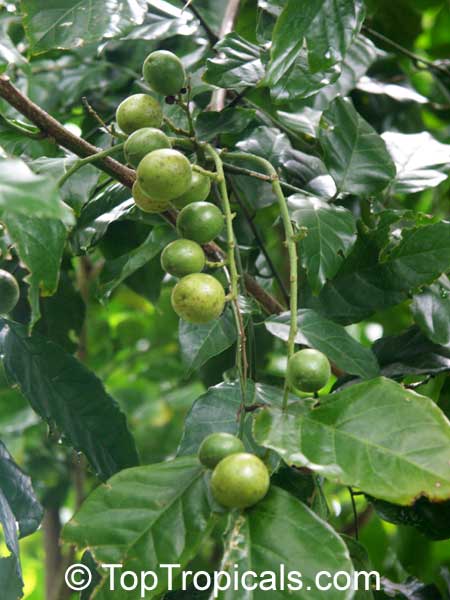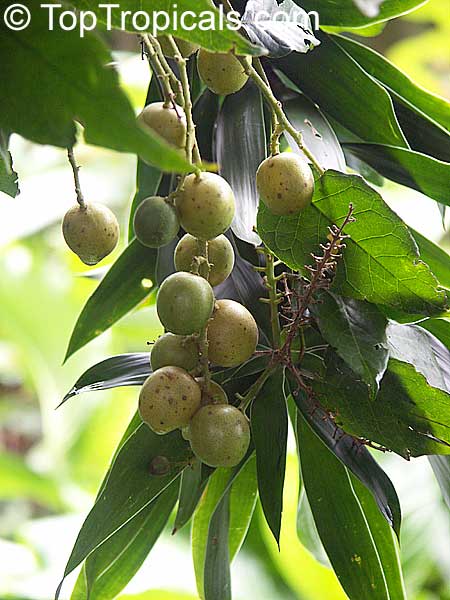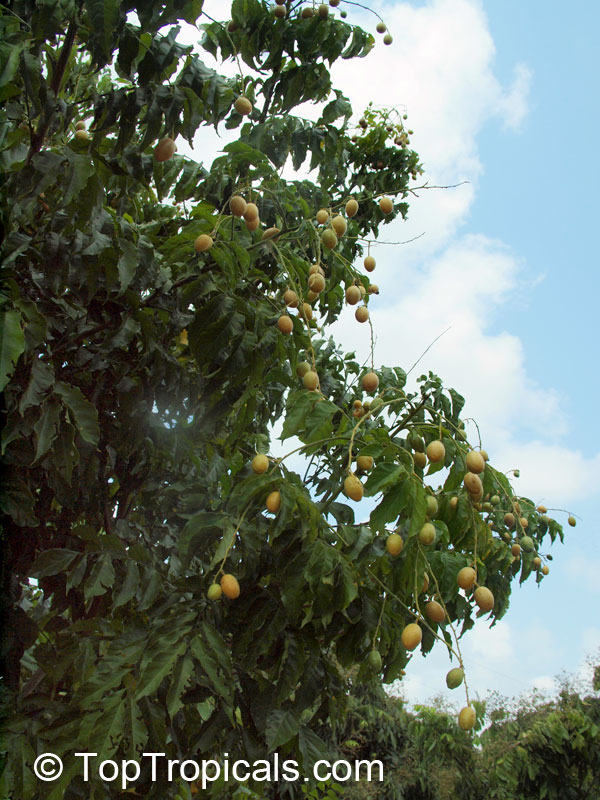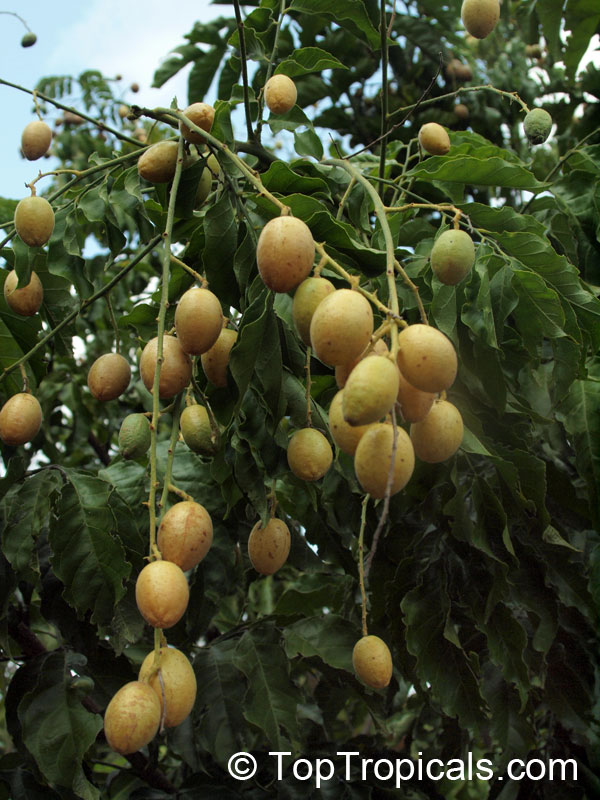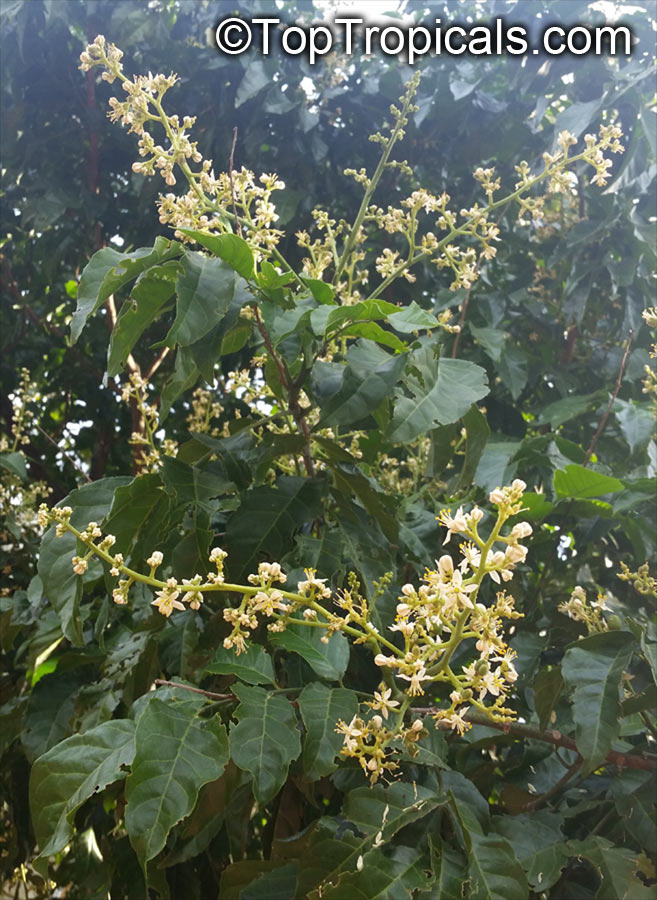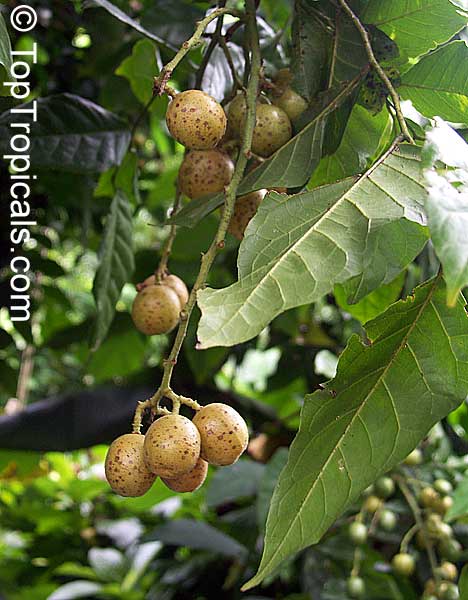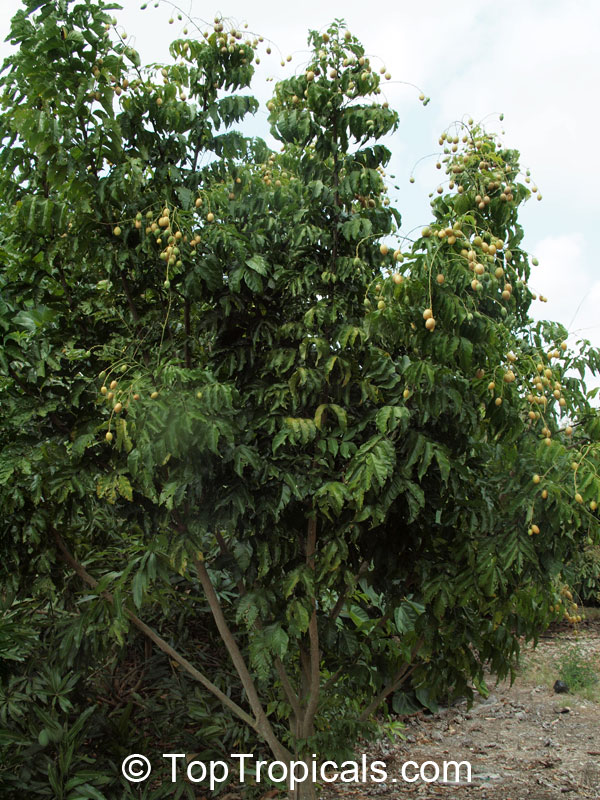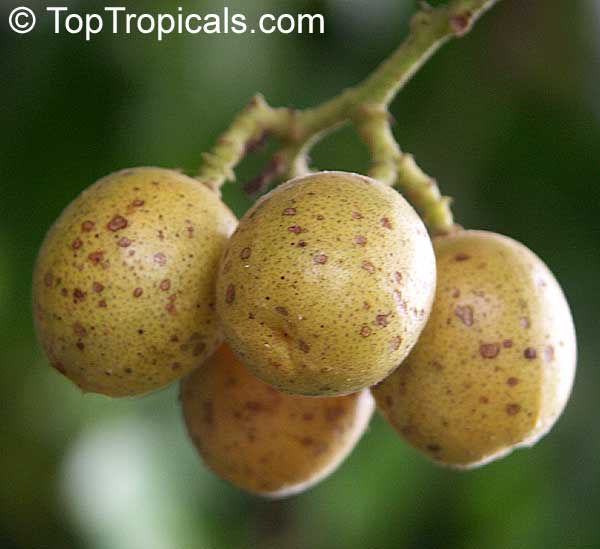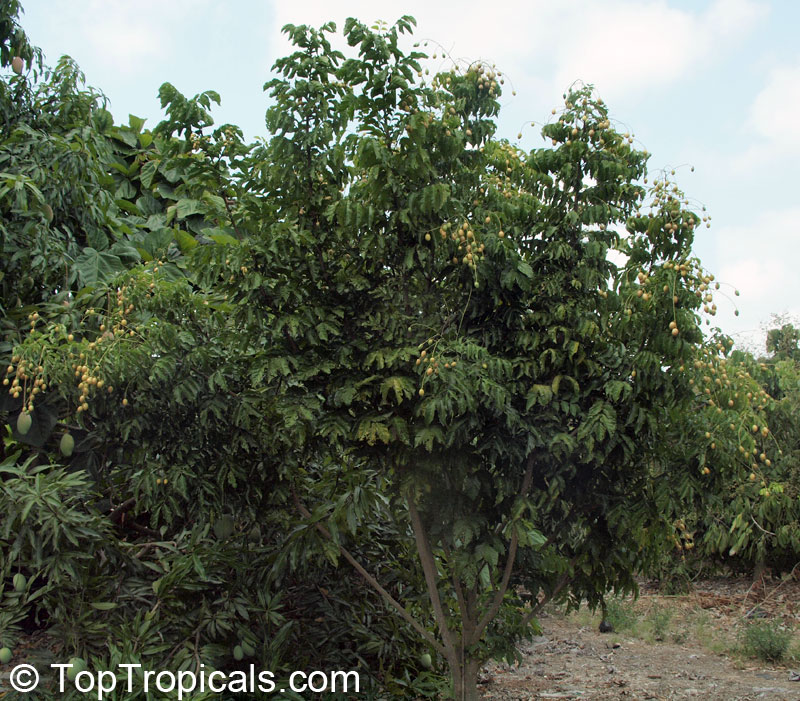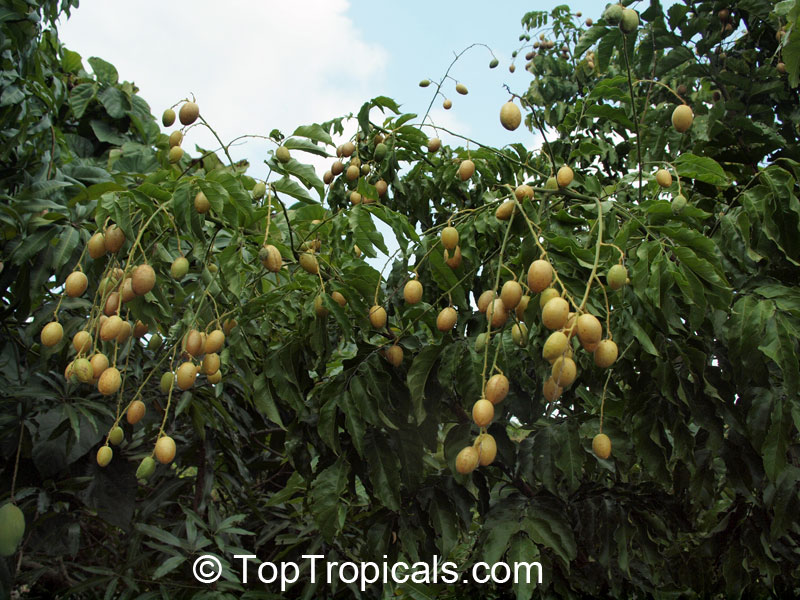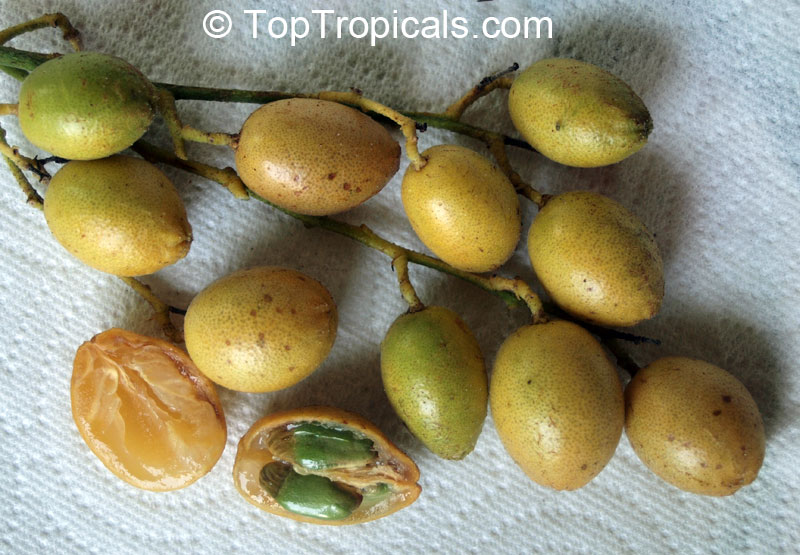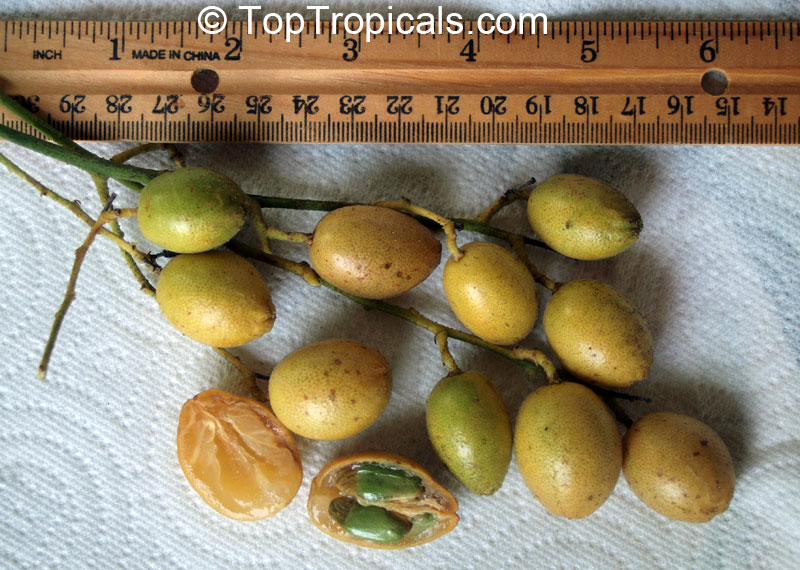Clausena lansium (Wampee)
Top Tropicals Plant Encyclopedia
Botanical names: Clausena lansium, Clausena punctata, Cookia wampi, Quinaria lansium
Common names: Wampee, Wampi
Family: Rutaceae
Origin: China






Native to China, Clausena lansium, commonly known as Wampee, is a small tree that can reach up to 10-20 feet under ideal conditions. It requires full sun and regular watering to thrive. Its white to off-white flowers are a delight to behold. Valued both for its ethnomedical properties as well as its edible fruits, the Wampee tree is hardy in USDA zone 8-11, able to withstand temperatures in the mid-20s F at least for a short time.
Each mature Wampee tree can produce an abundance of fruits. Eaten raw when fully peeled and ripe, the sweet or subacid types are pleasant to eat out-of-hand with discarding of the seeds. The pulp can be added to fruit cups, gelatins or other desserts, or made into pie or jam. Jelly can be made from the acid types when under-ripe. The Chinese serve the seeded fruits with meat dishes. In Southeast Asia, a bottled, carbonated beverage resembling champagne is created by fermenting the fruit with sugar and straining off the juice.
The Wampee fruit also has strong therapeutic benefits. It is thought to have stomachic and cooling effects as well as act as a vermifuge. It is even said to counteract the bad effects of having too many lychees if eaten on a full stomach. The halved, sun-dried, immature fruit is a Vietnamese and Chinese remedy for bronchitis. Thin slices of the dried roots are sold in Oriental pharmacies for the same purpose. The leaf decoction is used as a hair wash to remove dandruff and preserve the color of the hair. The bark and mature fruits contain a yellowish-brown, aromatic oil that is used medicinally as an anthelmintic and vermifuge.
When grown in a pot, the Wampee tree should be in a sunny location and kept adequately moist. In cold climates, the pot must be brought indoors in the winter or stored in a cool and dry place to protect the roots from freezing temperatures.
